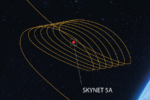Abu Dhabi Ship Building (ADSB), part of EDGE Group, and the Technology Innovation Institute (TII), the applied research arm of Abu Dhabi’s Advanced Technology Research Council (ATRC), have jointly launched a Naval Innovation Hub. This initiative aims to accelerate the development of advanced naval technologies for the United Arab Emirates (UAE) by integrating cutting-edge research with operational shipbuilding expertise.
Strategic Objectives of the Naval Innovation Hub
The newly announced hub is positioned as a national-level initiative to enhance indigenous maritime defense capabilities. Located in Abu Dhabi, it will serve as a collaborative platform for research, prototyping, and testing of next-generation naval systems. The primary focus areas include:
- Autonomous surface vessels (ASVs)
- Unmanned underwater vehicles (UUVs)
- Artificial intelligence (AI) and machine learning for naval applications
- Advanced sensor fusion and ISR integration
- Cybersecurity for maritime platforms
The hub will also act as a testbed for rapid prototyping and technology validation in real-world maritime environments. It is expected to support both military and dual-use applications across littoral security, port protection, mine countermeasures (MCM), and long-endurance ISR missions.
Partners’ Roles: ADSB’s Industrial Base Meets TII’s R&D Muscle
ADSB brings decades of experience in shipbuilding, MRO services, system integration, and platform lifecycle support. As part of EDGE Group—one of the top 25 military suppliers globally according to SIPRI—it provides industrial scale-up capabilities crucial for turning lab concepts into operational platforms.
TII contributes deep expertise in AI/ML algorithms, autonomous systems engineering, secure communications, robotics, propulsion technologies, materials science (including stealth coatings), and quantum sensing. Through its Autonomous Robotics Research Center (ARRC) and Directed Energy Research Center (DERC), TII has already demonstrated capabilities that are directly applicable to future naval platforms.
The synergy between ADSB’s production infrastructure and TII’s advanced research ecosystem is designed to shorten development cycles from concept to deployment—especially important given rising regional security demands in the Red Sea-Gulf of Oman corridor.
Focus on Unmanned Maritime Systems Development
A key deliverable from the hub will be indigenous unmanned surface vessel designs optimized for Gulf waters. These platforms are expected to feature modular payload bays supporting:
- EO/IR surveillance turrets with onboard AI analytics
- Synthetic aperture sonar or side-scan sonar modules for mine detection
- C-UAS jamming or kinetic effectors for harbor defense roles
- SIGINT/ELINT packages integrated via open architecture C4ISR frameworks
The UAE has previously trialed USVs such as MARTAC’s MANTAS series during joint exercises but aims to establish sovereign design authority through this hub. A scalable hull design—likely under 12 meters LOA—is anticipated within two years based on current program timelines.
Integration with National Defense Strategy and EDGE Portfolio
This initiative aligns with the UAE’s broader strategy under Operation “Edge-of-Tomorrow,” which seeks self-reliance in critical defense technologies by 2030. The Naval Innovation Hub complements other EDGE subsidiaries like HALCON (missile systems), SIGN4L (EW/cyber), AL TARIQ (precision-guided munitions), forming an end-to-end capability chain from sensors to shooters across domains.
In addition to military applications, ADSB-TII collaboration may yield spin-off technologies relevant for coast guard modernization programs or regional export customers seeking cost-effective unmanned solutions tailored for shallow water operations.
Outlook: Regional Implications and Future Milestones
The establishment of this hub comes amid increased interest in unmanned maritime capabilities across the Middle East. Saudi Arabia’s Scopa Industries recently announced its own USV development effort; Iran continues deploying low-cost swarm boats; while Israel fields multiple classes of operational USVs including Rafael’s Protector series.
The UAE’s move signals intent not only to catch up but potentially leapfrog regional competitors through high-tech partnerships backed by sovereign funding. Key milestones expected over the next 24 months include:
- A demonstrator USV prototype by Q3 2026 with autonomous navigation stack validated at sea
- A secure C2 link architecture hardened against GPS spoofing/jamming threats by mid-2026
- Integration trials with EDGE-developed loitering munitions or EW payloads by late-2027








